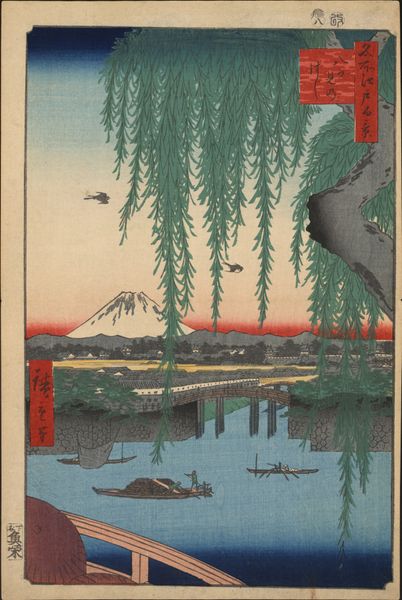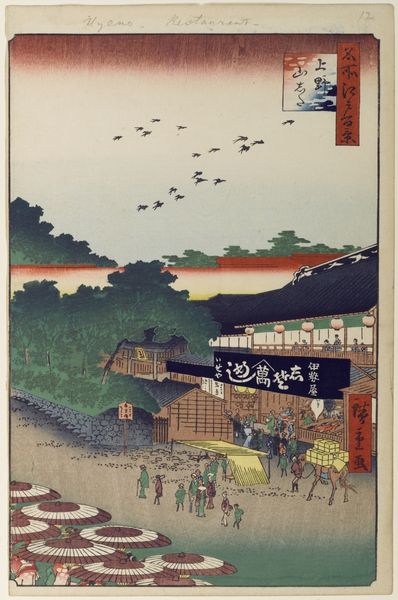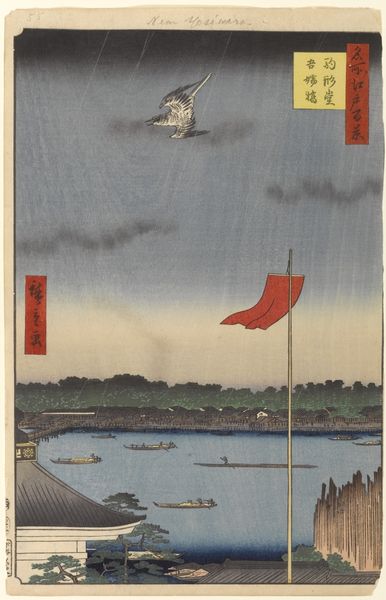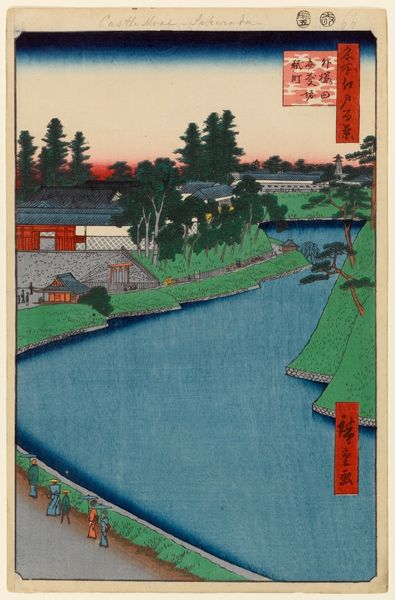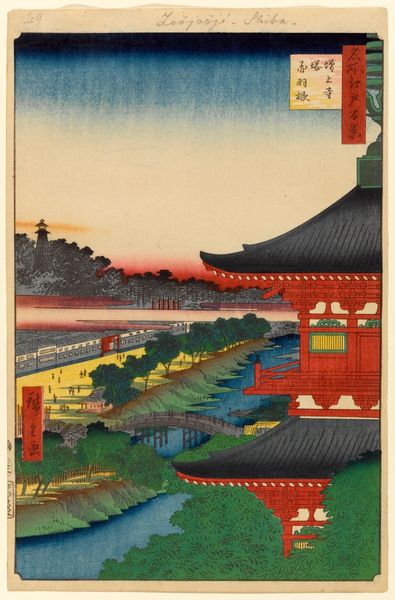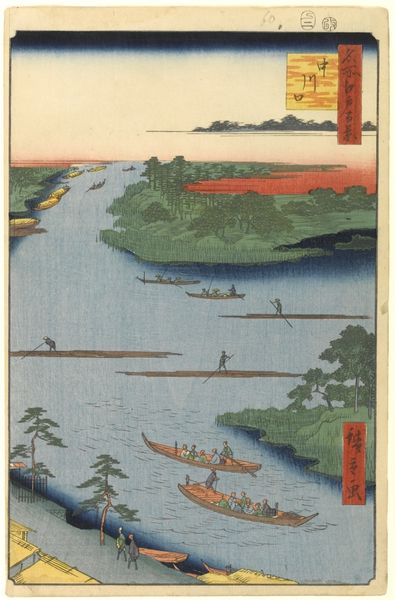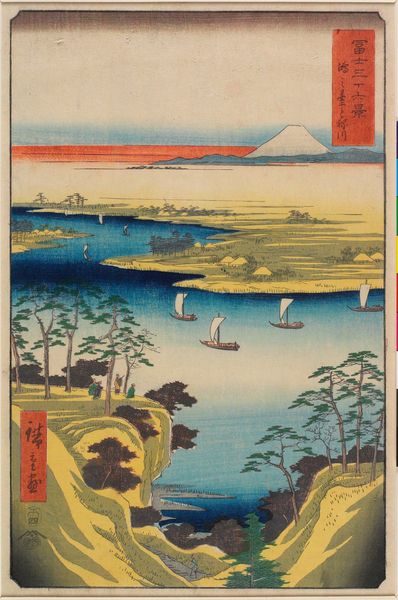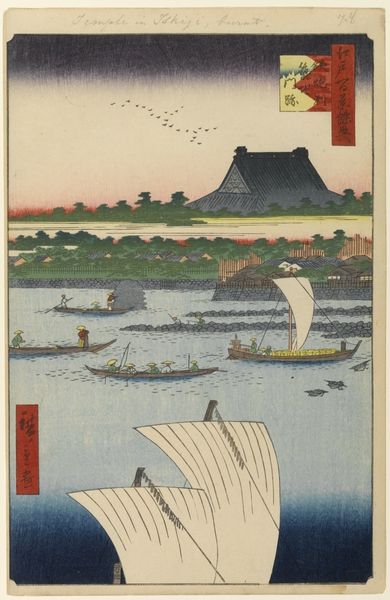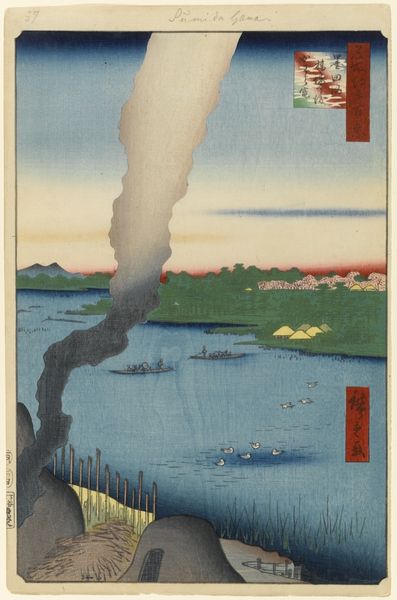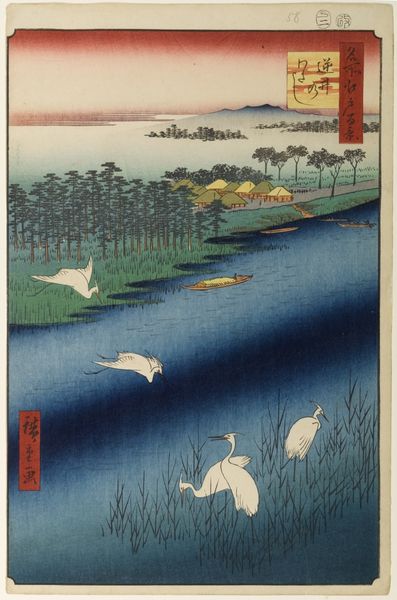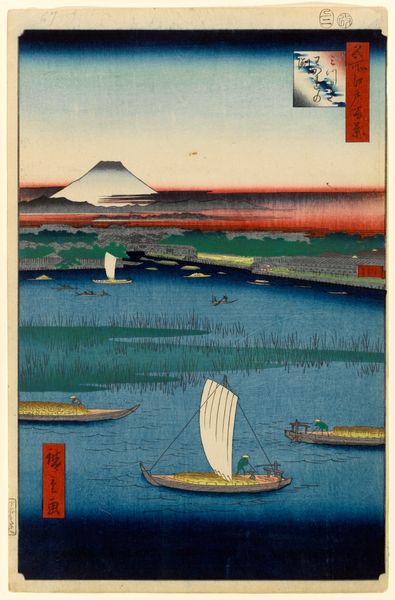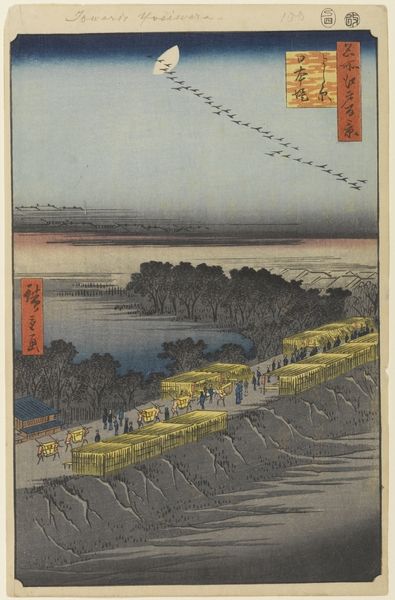
print, woodblock-print
#
water colours
# print
#
asian-art
#
landscape
#
ukiyo-e
#
perspective
#
woodblock-print
#
cityscape
#
watercolour illustration
Copyright: Public domain
Curator: This is "Hibiya and Soto Sakurada from Yamashita Chō," a woodblock print crafted by Utagawa Hiroshige in 1857. Look at that serene vista of Edo. What do you make of it? Editor: It strikes me as quite delicate, almost fragile. The composition feels open, and the colors are subdued. It’s remarkable how he created depth with such simple means. The materiality looks incredibly considered. Curator: Indeed. Hiroshige was a master of ukiyo-e, “pictures of the floating world,” depicting everyday life and landscapes. Notice the perspective: the large pine branch in the foreground, the figures flying kites... it all draws the eye deeper into the scene. It places the viewer in the role of a participant. Editor: The process of creating these prints intrigues me. The carving of the woodblocks, the layering of inks – imagine the level of artisanal skill. There was a whole industry around printmaking. We should reflect more often on that level of physical engagement when making and enjoying artworks like this. It shows labor. Curator: Absolutely. These prints were not mere decoration. They offered affordable art to a wider public, influencing perceptions of place and contributing to a growing sense of national identity during the Edo period. Editor: And how these prints circulated, the markets where they were sold, who was consuming them – all crucial to understanding their place in society and cultural footprint. What’s particularly powerful is considering it not as just ‘art’ but as an artifact born from a precise material history. Curator: Precisely. Thinking about its cultural role makes it more apparent. The very act of creating and distributing such imagery was a commercial undertaking deeply entwined with social dynamics. The kites flying high in the air certainly seem indicative of freedom of thought. Editor: It all underscores the interconnectedness of art and labor. By examining these prints with an emphasis on how it was produced, it makes us think about the tangible, lived reality embedded in the image, enriching our appreciation for the piece. Curator: It’s always beneficial to delve deeper and reconsider. Every work of art emerges from complex historical conditions. It shows us there is more to these things than meets the eye. Editor: It really highlights the importance of analyzing not just the final product, but the systems of production that made the image possible, giving it added meaning to viewers today.
Comments
No comments
Be the first to comment and join the conversation on the ultimate creative platform.
